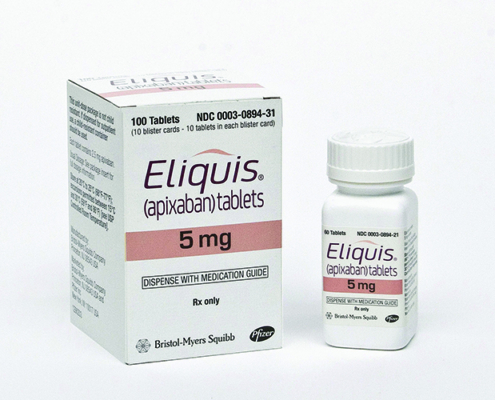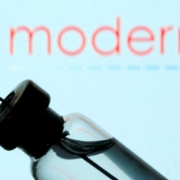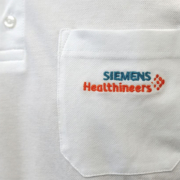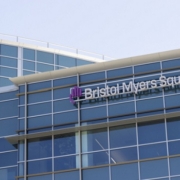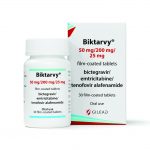Bristol Myers Squibb 2022: The new normal
With Celgene and other acquisition costs in the rearview, Bristol Myers Squibb returned to profitability with a vengeance in 2021.
By Joshua Slatko • [email protected]
430 E. 29th Street, 14th floor
New York, NY 10016
212-546-4200 • bms.com
| Financial Performance | ||||
| 2021 | 2020 | 1H 2022 | 1H 2021 | |
| Revenue | $46,385 | $42,518 | $23,535 | $22,776 |
| Net income | $7,014 | $(8,995) | $2,712 | $3,090 |
| Diluted EPS | $3.12 | $(3.99) | $1.25 | $1.36 |
| R&D expense | $11,354 | $11,143 | $4,581 | $4,697 |
| All figures are in millions of dollars, except EPS. | ||||
Best-selling products
All sales are in millions of dollars.
2021 sales
- Revlimid $12,821
- Eliquis $10,762
- Opdivo $7,523
- Pomalyst $3,332
- Orencia $3,306
- Sprycel $2,117
- Yervoy $2,206
- Abraxane $1,181
- Reblozyl $551
1H 2022 sales
- Eliquis $6,446
- Revlimid $5,298
- Opdivo $3,986
- Pomalyst $1,734
- Orencia $1,668
- Yervoy $1,040
- Sprycel $1,027
- Abraxane $455
- Reblozyl $328
Outcomes Creativity Index Score: 4
- Manny Awards — 2
- Cannes Lions — N/A
- Clio Health — N/A
- Creative Floor Awards — N/A
- London International Awards – N/A
- MM+M Awards — 2
- One Show — N/A
2020 may have been the first year of the new, post-Celgene acquisition version of Bristol Myers Squibb, but 2021 was the first year that BMS 2.0 started putting money back in its shareholders’ pockets again. With the Celgene charges now past and nearly all of the company’s blockbuster products showing growth, BMS was able to generate more than $7 billion in profit for the year, a number that would have been inconceivable in the old days. And while sales of the biggest prize of the Celgene acquisition, Revlimid, are beginning to fade due to generic competition, products like Eliquis, Opdivo, Pomalyst, and Orencia look likely to keep BMS in its new top-shelf industry position for some time to come.
“I am very pleased with the continued strong demand for our in-line products and new product portfolio, resulting in solid top and bottom-line growth,” said Giovanni Caforio, M.D., board chair and CEO, Bristol Myers Squibb, in the company’s 2Q22 earnings announcement. “The momentum with our business and strength of our pipeline, gives us significant opportunities to drive continued growth, starting with the anticipated approval for deucravacitinib in moderate to severe plaque psoriasis and the expected transition of milvexian, our next-generation anti-thrombotic, to Phase III development. With our financial strength and dedicated workforce, we are well positioned to help more patients and drive long-term value for our shareholders.”
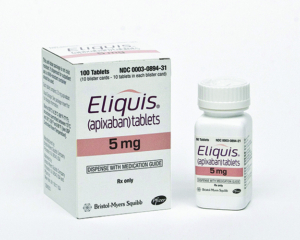
Eliquis reached the $10 billion sales mark in 2021 with growth of 17.4 percent. In 2022, Eliquis passed Revlimid to become Bristol Myers’ top-selling product.
BMS’ top-line revenue in 2021 was $46.39 billion, an improvement of 9.1 percent over the previous year. Net income for the year totaled $7.01 billion, and earnings per share was $3.12. While the bottom-line numbers from 2020 were impacted significantly by large charges relating to the Celgene and MyoKardia acquisitions, leading to a GAAP net loss of nearly $9 billion that year, company leaders estimated non-GAAP EPS at $6.44 per share for 2020 and $7.51 per share in 2021, an improvement of 16.6 percent. In the first half of 2022, BMS’ top line was $23.54 billion, up 3.3 percent, while net income declined 12.2 percent to $2.71 billion and EPS was down 11 cents to $1.25. BMS executives are projecting full-year 2022 EPS at $2.71-$3.01.
Partnerships and acquisitions
In January, BMS and Century Therapeutics announced a research collaboration and license agreement to develop and commercialize up to four induced pluripotent stem cell (“iPSC”) derived, engineered natural killer cell (“iNK”) and / or T cell (“iT”) programs for hematologic malignancies and solid tumors. The first two programs include a program in acute myeloid leukemia and a program in multiple myeloma, which could incorporate either the iNK or a gamma delta iT platform. Bristol Myers Squibb has the option to add two additional programs which can be nominated subject to certain conditions agreed with Century in the agreement.
Century is responsible for development candidate discovery and preclinical development activities. Thereafter, Bristol Myers Squibb will be responsible for clinical development and commercialization activities subject to Century’s co-promotion rights on certain programs. Under the terms of the agreement, Century received a $100 million upfront payment and Bristol Myers Squibb will make a $50 million equity investment in Century Therapeutics’ common stock at a price of $23.14 per share. In addition, Century will receive reimbursement of certain preclinical development costs for development candidates licensed by Bristol Myers Squibb, and is eligible for additional payments for future program initiations and development, regulatory, and commercial milestone payments totaling more than $3 billion across the four potential programs.
Century will also receive tiered royalties as a percentage of global net sales in the high-single to low-double digits. In addition, under the agreement, Century may elect to co-promote the AML program and one of the additional programs in the United States for no exercise fee which will also trigger enhanced U.S. royalties.
In June, BMS agreed to acquire Turning Point Therapeutics for $76 per share in an all-cash transaction for a total consideration of $4.1 billion in equity value. Turning Point is a clinical-stage precision oncology company with a pipeline of investigational medicines designed to target the most common mutations associated with oncogenesis. The company’s lead asset, repotrectinib, is a next-generation, potential best-in-class tyrosine kinase inhibitor (TKI) targeting the ROS1 and NTRK oncogenic drivers of non-small cell lung cancer (NSCLC) and other advanced solid tumors. Repotrectinib has been granted three Breakthrough Therapy Designations by the FDA. In the Phase I/II TRIDENT-1 clinical trial, longer duration of response has been observed in the landmark analysis with repotrectinib than with existing ROS1 agents in first-line NSCLC. BMS executives expect repotrectinib to be approved in the United States in the second half of 2023. The transaction duly closed in August.
Also in June, BMS and Immatics N.V. announced that they have expanded their strategic alliance to pursue the development of multiple allogeneic off-the-shelf TCR-T and/or CAR-T programs. Under this collaboration, Bristol Myers Squibb and Immatics will develop two programs owned by Bristol Myers Squibb and both companies have an option to develop up to four additional programs each. The programs will utilize Immatics’ proprietary gamma delta T cell-derived, allogeneic Adoptive Cell Therapy (ACT) platform, called ACTallo, and a suite of next-generation technologies developed by Bristol Myers Squibb.
Under the terms of this agreement, Immatics received an upfront payment of $60 million as well as up to $700 million per Bristol Myers Squibb program through development, regulatory, and commercial milestone payments and tiered royalty payments of up to low double-digit percentages on net product sales. Immatics is responsible for preclinical development of the initial two Bristol Myers Squibb-owned programs and will receive additional payment for certain activities that Immatics could perform at Bristol Myers Squibb’s request. Bristol Myers Squibb will assume responsibility for clinical development and commercialization activities of all BMS-owned programs thereafter.
In addition, Bristol Myers Squibb and Immatics will expand their 2019 collaboration agreement focused on autologous T cell receptor-based therapy (TCR-T), with the inclusion of one additional TCR target discovered by Immatics. As part of this expansion, Immatics will receive an upfront payment of $20 million and is eligible for milestone payments and royalties.
Product performance
The multiple myeloma drug Revlimid led BMS’ portfolio in 2021 with sales of $12.82 billion, an improvement of 5.9 percent. According to company executives, this was due to higher average net selling prices and higher demand in the United States and higher demand internationally. In the first half of 2022, sales of Revlimid declined 13.8 percent to $5.3 billion due to loss of exclusivity
The cardiovascular product Eliquis enjoyed sales of $10.76 billion in 2021, up 17.4 percent. According to BMS leaders, this was due to higher demand both in the United States and internationally. In the first half of 2022. Eliquis passed Revlimid to become the leading seller in BMS’ portfolio, with sales growing by 13.5 percent to $6.45 billion.
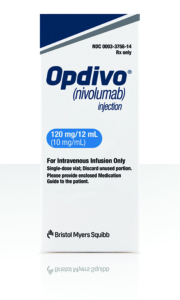
The immuno-oncologic Opdivo generated more than $7.5 billion in sales for BMS in 2021; the drug has earned new approvals from FDA for NSCLC and ESCC since the beginning of 2022.
Opdivo, BMS’ leading immuno-0ncologic, generated $7.52 billion in sales for the company in 2021, an improvement of 7.6 percent. BMS leaders say this was due to higher domestic demand across multiple therapies including the Opdivo and Yervoy combinations in NSCLC, the Opdivo and Cabometyx combination in kidney cancer, and Opdivo in various gastric and esophageal cancers, and higher average net selling prices, partially offset by declining second-line eligibility across tumor indications and increased competition. In the first half of 2022, sales of Opdivo rose another 9.8 percent to $3.99 billion.
In February, BMS and Exelixis Inc. announced two-year (25.4 months minimum; 32.9 months median) follow-up results from analyses of the Phase III CheckMate -9ER trial, demonstrating sustained survival and response rate benefits, as well as health-related quality of life improvements, with the combination of Opdivo and Cabometyx versus sunitinib in the first-line treatment of advanced renal cell carcinoma.
At the final OS analysis, Opdivo in combination with Cabometyx continued to show meaningful improvements in median OS (37.7 months versus 34.3 months) and demonstrated a 30 percent reduction in the risk of death compared to sunitinib. Progression-free survival (PFS) benefits were maintained, with the combination continuing to double median PFS versus sunitinib (16.6 months versus 8.3 months, respectively). ORR benefits were sustained, with nearly twice as many patients responding to Opdivo in combination with Cabometyx versus sunitinib (55.7 percent versus 28.4 percent). Responses were also more durable with the combination, with a median DoR of 23.1 months, compared to 15.1 months with sunitinib. CR rates more than doubled among patients treated with the combination, with 12.4 percent having a CR versus 5.2 percent of those treated with sunitinib.
In March, FDA approved Opdivo in combination with platinum-doublet chemotherapy every three weeks for three cycles for adult patients with resectable (tumors ≥4 cm or node positive) NSCLC in the neoadjuvant setting. Opdivo plus chemotherapy was approved regardless of PD-L1 status. The approval was based on the CheckMate -816 trial, the first positive Phase III trial of an immunotherapy-based combination used before surgery for resectable NSCLC. The trial showed that neoadjuvant treatment with three cycles of Opdivo in combination with chemotherapy significantly improved event-free survival (EFS), a primary endpoint, compared to chemotherapy alone in patients with resectable NSCLC. With a minimum follow-up of 21.0 months, Opdivo with chemotherapy reduced the risk of disease recurrence, progression or death by 37 percent across randomized patients when administered before surgery. In patients receiving the combination, median EFS was 31.6 months, compared to 20.8 months for patients treated with chemotherapy alone.
Also in March, BMS and Nektar Therapeutics announced that the first analysis of the Phase III PIVOT IO-001 study evaluating the doublet therapy of bempegaldesleukin in combination with Opdivo compared to Opdivo monotherapy as a first-line treatment for previously untreated unresectable or metastatic melanoma showed that the study did not meet the primary endpoints of progression-free survival and objective response rate as assessed by Blinded Independent Central Review, and that the third primary endpoint of overall survival (OS) did not meet statistical significance at the first interim analysis.
In April, Nektar and BMS announced that based on results from pre-planned analyses of two late-stage clinical studies of bempegaldesleukin in combination with Opdivo in renal cell carcinoma and bladder cancer, the companies had jointly decided to end the global clinical development program for bempegaldesleukin in combination with Opdivo. These studies and all other ongoing studies in the program will be discontinued.
In May, FDA approved both Opdivo in combination with fluoropyrimidine- and platinum-containing chemotherapy and Opdivo plus Yervoy as a first-line treatment for adult patients with unresectable advanced or metastatic esophageal squamous cell carcinoma regardless of PD-L1 status. The approvals were based on the Phase III CheckMate -648 trial, which evaluated Opdivo in combination with chemotherapy and Opdivo plus Yervoy each compared to chemotherapy alone, and was the largest Phase III trial of an immunotherapy in first-line ESCC.
In the trial, Opdivo in combination with chemotherapy demonstrated superior overall survival compared to chemotherapy alone, both in all randomized patients, a secondary endpoint, which was hierarchically tested and in patients whose tumors express PD-L1 (≥1%), a primary endpoint. In all randomized patients the median OS was 13.2 months with Opdivo in combination with chemotherapy versus 10.7 months with chemotherapy alone. In patients whose tumors express PD-L1 (≥1%) the mOS was 15.4 months for Opdivo in combination with chemotherapy versus 9.1 months with chemotherapy alone. The median progression-free survival in all randomized patients, which was a hierarchically tested secondary endpoint, was 5.8 months for Opdivo in combination with chemotherapy and 5.6 months for chemotherapy alone. Per pre-specified analysis, PFS did not meet statistical significance. The median PFS in patients whose tumors express PD-L1 (≥1%), which was a co-primary endpoint, was 6.9 months for Opdivo in combination with chemotherapy and 4.4 months for chemotherapy alone.
Opdivo plus Yervoy also improved OS compared to chemotherapy in all-randomized patients, a secondary endpoint, which was hierarchically tested and patients whose tumors express PD-L1 (≥1%), a primary endpoint. The mOS was 12.8 months with Opdivo plus Yervoy versus 10.7 months with chemotherapy alone in all randomized patients and 13.7 months with Opdivo plus Yervoy versus 9.1 months with chemotherapy alone in patients whose tumors express PD-L1 (≥1%). The median PFS in patients whose tumors express PD-L1 (≥1%), which was a co-primary endpoint, was 4.0 months for Opdivo plus Yervoy and 4.4 months for chemotherapy alone. Per pre-specified analysis, PFS did not meet statistical significance. Median PFS in the PD-L1 (≥1%) population was not statistically significant and therefore it was not hierarchically tested in the all comers population.
Also in May, BMS announced the Phase III CheckMate -901 trial, comparing Opdivo plus Yervoy to standard-of-care chemotherapy as a first-line treatment for patients with untreated unresectable or metastatic urothelial carcinoma, did not meet the primary endpoint of overall survival in patients whose tumor cells express PD-L1 ≥1% at final analysis.
In June, BMS announced three-year follow-up results from the Phase III CheckMate -9LA trial demonstrating durable survival benefits with Opdivo plus Yervoy with two cycles of chemotherapy compared to four cycles of chemotherapy in previously untreated patients with metastatic non-small cell lung cancer. With a minimum follow-up of three years (36.1 months), the dual immunotherapy-based combination continued to show sustained improvement in OS, the trial’s primary endpoint, with 27 percent of patients treated with Opdivo plus Yervoy with two cycles of chemotherapy alive compared to 19 percent of patients treated with chemotherapy alone at three years.
The long-term, durable clinical benefit of Opdivo plus Yervoy with two cycles of chemotherapy was observed at three years across patient populations that typically have a poor prognosis, including patients with PD-L1 expression <1% and squamous histology. Among patients with tumor PD-L1 expression <1%, the OS rate was 25 percent for those treated with the dual immunotherapy-based combination versus 15 percent for chemotherapy alone. Among those with squamous histology, the OS rate was 24 percent for patients who received Opdivo plus Yervoy with chemotherapy, compared to 11 percent for those who received chemotherapy alone. In an exploratory analysis, a positive trend for OS benefit was also observed with Opdivo plus Yervoy with chemotherapy among patients with certain tumor mutations, such as STK11.
Also in June, BMS announced five-year results from Part 1 of the Phase III CheckMate -227 trial, which continues to demonstrate long-term, durable survival benefits of first-line treatment with Opdivo plus Yervoy compared to chemotherapy in patients with metastatic non-small cell lung cancer, regardless of PD-L1 expression levels.
With a minimum follow-up of over five years (61.3 months), the longest reported for an immunotherapy combination in mNSCLC, in the primary endpoint population of patients with tumor PD-L1 expression ≥1%, the five-year survival rate for Opdivo plus Yervoy was 24 percent, compared to 14 percent for chemotherapy. In an exploratory analysis of patients with PD-L1 expression <1%, almost three times as many patients treated with Opdivo plus Yervoy were alive at five years compared to those treated with chemotherapy (19 percent versus 7 percent).
Among those who responded to treatment, more patients who received Opdivo plus Yervoy remained in response versus chemotherapy at five years (after being off treatment for more than three years, which ended at a maximum of two years for immunotherapy according to the trial protocol) in both the PD-L1 ≥1% (28 percent versus 3 percent, respectively) and <1% (21 percent versus 0 percent, respectively) subgroups. Among patients treated with Opdivo plus Yervoy who were alive at five years, about two-thirds (66 percent of patients with PD-L1 expression ≥1% and 64 percent of patients with PD-L1 expression <1%) did not receive any subsequent therapy for more than three years after stopping treatment.
In July, BMS announced that Part A of the Phase III CheckMate -914 trial, evaluating Opdivo plus Yervoy as an adjuvant treatment for patients with localized renal cell carcinoma who have undergone full or partial removal of the kidney and who are at moderate or high risk of relapse, did not meet the primary endpoint of disease-free survival as assessed by Blinded Independent Central Review.
The multiple myeloma product Pomalyst generated $3.33 billion in sales for BMS in 2021, an improvement of 8.5 percent compared with the previous year. Company leaders say this was due to higher average net selling prices and higher demand. In the first half of 2022, sales of Pomalyst rose another 6.6 percent to $1.73 billion.
The autoimmune drug Orencia brought in $3.31 billion in sales in 2021, up 4.7 percent for the year. BMS leaders say this was due to higher demand domestically, offset somewhat by lower demand internationally. In the first half of 2022 Orencia sales rose another 6.1 percent to $1.67 billion.
In June, BMS announced topline results from the Phase III Accelerating COVID-19 Therapeutic Interventions and Vaccines (ACTIV-1) Immune Modulators clinical trial, sponsored by the National Institutes of Health. The study evaluated the safety and efficacy of a single dose of immune modulators, including Orencia IV (10 mg/kg) versus placebo when given with standard of care to determine if modulating the immune system’s response could speed recovery and reduce death in adults hospitalized with moderate to severe COVID-19.
Treatment with Orencia versus placebo displayed a strong but not statistically significant improvement in the primary endpoint of time to recovery as measured by day of hospital discharge. Analyses of the secondary endpoints, which included mortality and clinical status, demonstrated Orencia reduced participants’ risk of death and improved their clinical status at 28 days after entering the study when compared with placebo. The risk of death was lower for participants who received Orencia at 11 percent, versus 15 percent for those who received placebo, and the odds of dying were 37.4 percent lower. The relative improvement in mortality was similar in both moderately and severely ill participants. People in the Orencia group had 34.2 percent better odds of clinical improvement than those in the placebo group.
Sprycel, for chronic myeloid leukemia, produced $2.12 billion in sales in 2021, a decline of 1.1 percent. According to company leaders, this was due to increased generic competition in certain indications internationally and lower average net selling prices. In the first half of 2022, sales of Sprycel edged back up by 1.6 percent to $1.03 billion.
The oncologic Yervoy enjoyed an impressive sales bounce of 31.2 percent to $2.21 billion in 2021. Domestic growth came due to higher demand primarily from the Opdivo+Yervoy combination for NSCLC and higher average net selling prices, while international growth was due to higher demand. First-half 2022 sales of Yervoy rose another 7.7 percent to $1.04 billion.
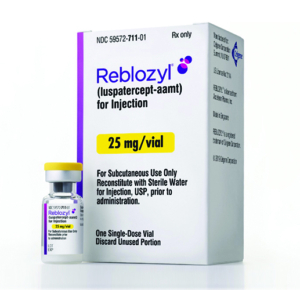
Reblozyl sales more than doubled to $551 million in 2021 and rose by more than a third in the first half of 2022 to $328 million.
Sales of the anemia treatment Reblozyl more than doubled in 2021, from $274 million to $551 million. Company leaders said this was due to higher demand after a new MDS indication approval from the FDA in April 2020. In the first half of 2022, sales of Reblozyl rose another 36.7 percent to $328 million.
In June, BMS withdrew a supplemental biologics license application for Reblozyl for the treatment of anemia in adults with non-transfusion dependent beta thalassemia. The company could not appropriately address the FDA’s questions about the benefit-risk profile of Reblozyl in this patient population based on the current dataset from the Phase II BEYOND trial. Reblozyl is approved in the United States for anemia in adult patients with beta thalassemia who require regular red blood cell transfusions, and anemia failing an erythropoiesis stimulating agent and requiring 2 or more red blood cell units over 8 weeks in adult patients with very low- to intermediate-risk myelodysplastic syndrome with ring sideroblasts or with myelodysplastic/myeloproliferative neoplasm with ring sideroblasts and thrombocytosis.
In the pipeline
In February, BMS announced interim results from the True North open-label extension study evaluating the long-term efficacy and safety profile of Zeposia in patients with moderately to severely active ulcerative colitis. Findings show that the percentage of patients achieving clinical remission, clinical response, endoscopic improvement and corticosteroid-free remission was maintained through Week 142.
In the True North extension study, data from an interim analysis of patients who had previously participated in the Phase III True North Zeposia clinical trial were examined. At Weeks 46, 94 and 142, 45 percent, 51 percent, and 45 percent of participants, respectively, were in clinical remission, and 80 percent, 84 percent, and 86 percent achieved clinical response, respectively. The efficacy of Zeposia in those who entered the long-term study as responders on Day 1 was higher compared to the total population, with 70 percent and 69 percent achieving clinical remission at Weeks 46 and 94, respectively, and 95 percent and 98 percent achieving clinical response at Weeks 46 and 94, respectively. At the time of this analysis, of the 823 patients from the Phase III True North trial who entered the open-label extension study, 64 percent subsequently completed Week 46, 34 percent completed Week 94, and 14 percent completed Week 142.
In March, FDA approved Opdualag, a first-in-class, fixed-dose combination of nivolumab (Opdivo) and relatlimab, administered as a single intravenous infusion for the treatment of adult and pediatric patients 12 years of age or older with unresectable or metastatic melanoma. The approval was based on the Phase II/III RELATIVITY-047 trial, which compared Opdualag to nivolumab alone. The trial met its primary endpoint, PFS, and Opdualag more than doubled the median PFS when compared to nivolumab monotherapy, 10.1 months versus 4.6 months.
In April, the FDA approved Camzyos for the treatment of adults with symptomatic New York Heart Association (NYHA) class II-III obstructive hypertrophic cardiomyopathy (obstructive HCM) to improve functional capacity and symptoms. Camzyos is the first and only FDA-approved allosteric and reversible inhibitor selective for cardiac myosin that targets the underlying pathophysiology of obstructive HCM.
This approval was based on data from the Phase III EXPLORER-HCM trial. At baseline, about 73 percent of the randomized patients were NYHA class II and 27 percent were NYHA class III. The mean LVEF was 74 percent, and the mean Valsalva left ventricular outflow tract (LVOT) gradient was 73 mmHg. The baseline mean Kansas City Cardiomyopathy Questionaire-23 (KCCQ-23) Clinical Summary Score (CSS) was 71. At Week 30, 37 percent of patients taking Camzyos achieved the composite primary endpoint, defined as the proportion of patients who achieved either improvement of mixed venous oxygen tension by ≥1.5 mL/kg/min plus improvement in NYHA class by at least 1 or improvement of pVO2 by ≥3.0 mL/kg/min plus no worsening in NYHA class, versus 17 percent treated with placebo. The difference was 19 percent. Additionally at Week 30, patients receiving Camzyos had greater improvement compared to placebo group across all secondary endpoints.
In May, BMS announced two-year results from the POETYK PSO long-term extension trial demonstrating durable efficacy and a consistent safety profile with deucravacitinib treatment in adult patients with moderate to severe plaque psoriasis. Clinical efficacy was maintained through up to two years of deucravacitinib treatment, with response rates at Week 60 in the LTE of 77.7 percent and 58.7 percent for Psoriasis Area and Severity Index (PASI) 75 and static Physicians Global Assessment (sPGA) 0/1 (clear/almost clear skin), respectively.
In June, the FDA approved Breyanzi, a CD19-directed chimeric antigen receptor (CAR) T cell therapy, for the treatment of adult patients with large B-cell lymphoma (LBCL), including diffuse large B-cell lymphoma (DLBCL) not otherwise specified (including DLBCL arising from indolent lymphoma), high-grade B-cell lymphoma, primary mediastinal large B-cell lymphoma, and follicular lymphoma grade 3B, who have refractory disease to first-line chemoimmunotherapy or relapse within 12 months of first-line chemoimmunotherapy; or refractory disease to first-line chemoimmunotherapy or relapse after first-line chemoimmunotherapy and are not eligible for hematopoietic stem cell transplant (HSCT) due to comorbidities or age. With these two new indications, Breyanzi now has the broadest patient eligibility of any CAR T cell therapy in relapsed or refractory LBCL.
The approval of the expanded indications for Breyanzi was based on results from the pivotal Phase III TRANSFORM study in which adults with LBCL that was primary refractory or relapsed within 12 months of front-line therapy were randomized to receive Breyanzi or standard therapy consisting of salvage immunochemotherapy, and if responsive, high-dose chemotherapy and HSCT. The trial included patients with diverse histologic subtypes and high-risk features, and offered a patient-centric design, allowing for bridging immunochemotherapy in the Breyanzi arm for disease control, which reflects real-world clinical practice and allowed for inclusion of patients with more aggressive and fast-progressing disease. Due to the high rate of patients whose disease does not respond to salvage immunochemotherapy, the trial also allowed for crossover from the standard therapy arm to the Breyanzi arm if patients did not derive a response after three cycles of salvage chemotherapy or had disease progression at any time.
Results from the TRANSFORM study showed that Breyanzi more than quadrupled median EFS compared to standard therapy (10.1 months versus 2.3 months). The majority of patients achieved a CR with Breyanzi compared to less than half with standard therapy (66 percent versus 39 percent), with median duration of CR not reached in the Breyanzi arm. Results also showed Breyanzi more than doubled PFS versus standard therapy (median PFS: 14.8 months versus 5.7 months). In the study, nearly all patients (97 percent) in the Breyanzi arm received treatment versus less than half (47 percent) of patients who completed high-dose chemotherapy and autologous HSCT in the standard therapy arm.
The efficacy of Breyanzi in the second-line setting was also based on data from the Phase II PILOT study, in which 61 adults with primary refractory or relapsed LBCL who were not considered candidates for stem cell transplant were treated with Breyanzi. The PILOT study enrolled a broad patient population based on age, performance status and/or organ function and comorbidities, and regardless of time to relapse following first-line treatment. Breyanzi showed deep and durable responses, with an overall response rate of 80 percent, the study’s primary endpoint, and a CR rate of 54 percent, with median time to CR of one month (range: 0.8 – 6.9 months). Median duration of response was 11.2 months, with the median duration of response not reached for those patients who achieved a CR.
Also in June, BMS announced new post-hoc analyses from the Zeposia Phase III DAYBREAK open-label extension (OLE) and Phase III SUNBEAM trials, showing early Zeposia use demonstrated cognitive benefits in people with relapsing multiple sclerosis (MS), with the greatest effect seen in people with high thalamic volume (TV), supporting an association between preserved brain volume (BV) and improved long-term cognitive outcomes. FDA approved Zeposia for the treatment of adults with relapsing forms of MS in March 2020 and for adults with moderately to severely active UC in May 2021.
In these new exploratory analyses, Zeposia treatment showed improved or preserved cognitive function in a majority of patients, with the greatest improvement seen when used early in the disease when TV remains high, supporting a positive association between preserved BV and long-term cognitive performance. Findings from the new research showed that people with high versus low BV, particularly TV, had higher cognitive performance, as assessed by the symbol digit modalities test (SDMT) score, at baseline. This trend remained stable or improved over 4-5 years of Zeposia treatment, leading to improved or preserved cognitive function in almost 80 percent of people with high TV (SDMT improved: 45.1 percent; SDMT preserved: 34.4 percent) and about 66 percent of people with low BV (SDMT improved: 35.6 percent; SDMT preserved: 30.7 percent) at Month 48 of the Phase 3 DAYBREAK OLE study.
Also in June, BMS announced positive results from the Phase II PAISLEY study evaluating deucravacitinib compared to placebo in patients with moderate to severe systemic lupus erythematosus (SLE). The study met the primary endpoint of achieving SLE Responder Index-4 (SRI(4)) responses, a composite endpoint used in SLE clinical trials to assess disease activity, at Week 32. A significantly greater proportion of patients on deucravacitinib 3 mg twice daily (BID) and 6 mg BID achieved SRI(4) at 32 weeks versus placebo (deucravacitinib 3 mg BID: 58.2 percent; deucravacitinib 6 mg BID: 49.5 percent; placebo: 34.4 percent). While the 12 mg once daily (QD) group had numerically higher SRI(4) responses relative to placebo at 32 weeks, the results did not reach statistical significance on multiplicity adjustment. SRI(4) responses were sustained across all deucravacitinib groups up to Week 48. Based on these results, BMS executives announced their intention to move deucravacitinib into Phase III studies systemic lupus erythematosus.
In August, BMS and 2seventy bio Inc. announced positive top-line results from KarMMa-3, a Phase III global, randomized, multicenter, open-label study evaluating Abecma compared to standard combination regimens in adults with multiple myeloma that is relapsed and refractory after two to four prior lines of therapy and refractory to the last regimen. KarMMa-3 is the first randomized clinical trial to evaluate a CAR T cell therapy in multiple myeloma. Results of a pre-specified interim analysis conducted through an independent review committee showed that KarMMa-3 met its primary endpoint of demonstrating a statistically significant improvement in PFS. Treatment with Abecma also showed an improvement in the key secondary endpoint of overall response rate compared to standard regimens. Follow-up for overall survival, a key secondary endpoint, remains ongoing.
Abecma was approved by FDA in March 2021 for the treatment of adult patients with relapsed or refractory multiple myeloma after four or more prior lines of therapy, including an immunomodulatory agent, a proteasome inhibitor, and an anti-CD38 monoclonal antibody.
Also in August, BMS and Janssen Pharmaceuticals Inc. announced results from the Phase II AXIOMATIC-SSP dose-ranging study of the investigational oral factor XIa (FXIa) inhibitor milvexian, which showed an approximate 30 percent relative risk reduction in recurrent symptomatic ischemic strokes and favorable safety profile in three arms compared to placebo when used in combination with background antiplatelet therapy in patients with an acute non-cardioembolic ischemic stroke or transient ischemic attack. There was no increase in severe bleeding versus placebo, and there was no fatal bleeding in any arm of the study, even with all patients on background dual antiplatelet therapy for 21 days followed by single antiplatelet therapy for the duration of the trial. The rate of major bleeding for milvexian 25 mg once daily and twice daily doses was similar to placebo, while a numerical increase was observed in milvexian dose arms of 50 mg twice daily and above, with no dose-response. Company executives expect to initiate a Phase III program later this year.

